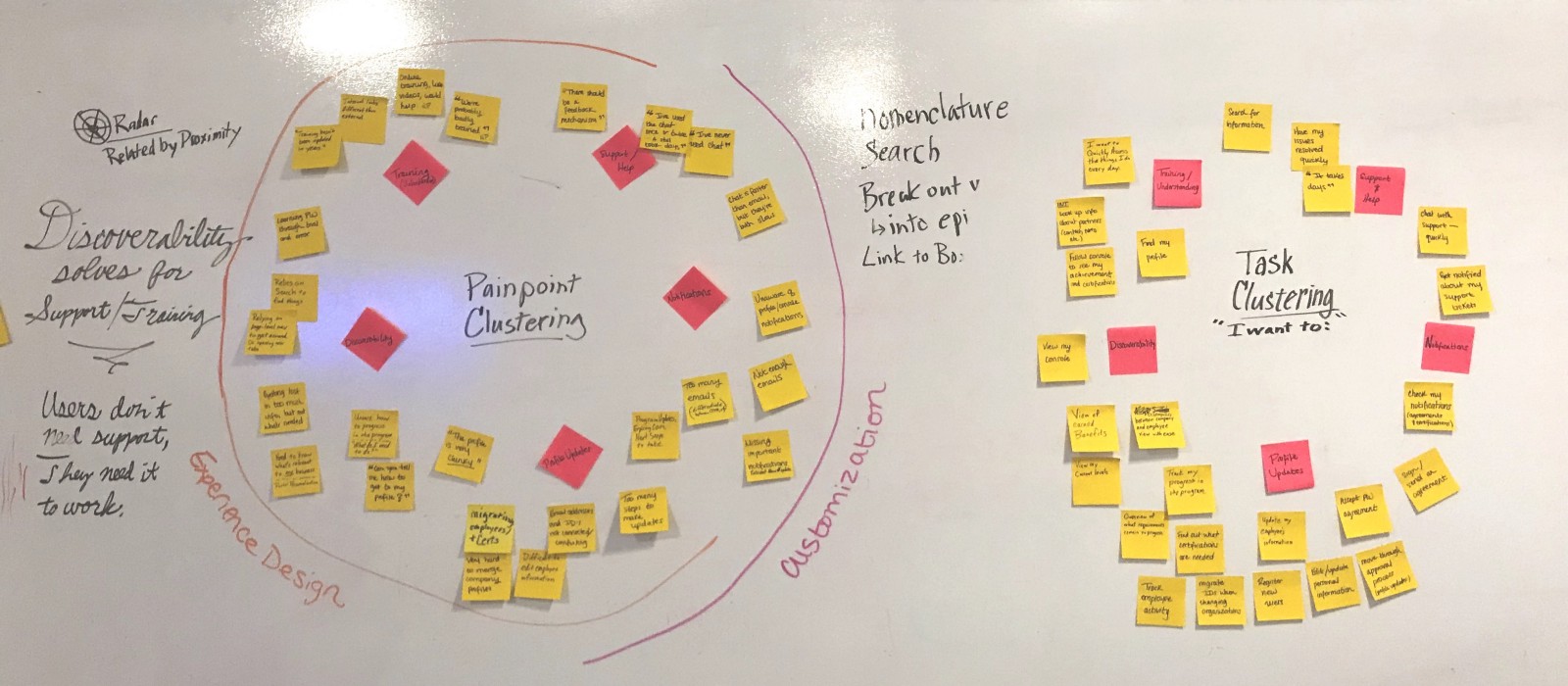The Writer's Guide to User Interviews
How to plan and run better user interviews, and synthesize your research into actionable insights
Interviews can give writers valuable insights — but only when they’re done well. If you’re new to conducting interviews or want to brush up your skills, here are some best practices and tips on conducting your best interview yet.
What are user and stakeholder interviews?
User interviews are guided conversations between you and a real user/customer. You’ll ask them focused yet open-ended questions and listen to their answers.
Stakeholder interviews are guided conversation with someone who works at the company you are serving. Stakeholders are people who will have an opinion about the content you write, who will provide feedback, or people in the company who are experts in the topic you’re writing about.
Interviews are typically either 30 minutes or 60 minutes long. Any shorter and it’s hard to get valuable information. Any longer and people lose focus.
What do you need to conduct an interview?
You’ll need a researcher (you), a note taker, and a participant. You’ll also need to define your research goals ahead of time, so that you know what you’re trying to learn. Then, you’ll need to craft some great interview questions to ask them.
The importance of a note-taker
Although it’s technically possible to conduct an interview without one, having someone to take notes can make a world of difference. If you take notes, it’s a distraction to both you and the person you’re interviewing. If you just record or transcribe your interview, you’re creating more work for yourself later. More importantly, a note-taker can jot down things they notice, like a change in someone’s tone of voice.
Remote or in-person?
You can conduct a successful user interview either remote or face-to-face. There are pros and cons to both, and none of them make a big impact on the overall outcome. In any group, you’ll likely get some participants who are more talkative on the phone and some who prefer being in person. It all events out in the end.
To run a remote interview, you can use video conferencing tools like Zoom or Skype. These are nice because they allow for screen-sharing if you need it, and they can also record the call.
How many user interviews should you do?
There’s no industry consensus on the best number of user interviews to do. Generally, most researchers find that they get what they need after somewhere between 6–12 interviews. Personally, I’ve found that after 5 or 6, you just start hearing the same things over and over.
If you’re not sure how many to do, I would start with 5 and then see how you feel. One other thing to consider is that if you have a few different user groups that are very different from each other, you might want to do 5 for each group.
When and why to conduct userinterviews
Even if your interviewing skills are great, it won’t matter if you’re doing interviews for the wrong reasons at the wrong time.
✅ Do use interviews to learn how people think and feel
Conversations are one of the best ways to learn about emotions, how people think, and how they describe things. All of those things are incredibly valuable to a writer.
People are great at sharing their opinions, thoughts, and feelings.
As we’ll explore later, people aren’t great at answering every type of question. But you can prompt people to think out loud and share their opinions. Questions like, “How does this problem affect your life?” are great, because they are open ended and subjective.
✅ Do use interviews to hear how people talk
As a writer, you know that words matter. And you also know that sometimes, people use words to mean different things. Interviews are a great opportunity to hear what words people use to describe certain problems or activities. You can then mirror their own words in your writing so that the way you write is easier for them to understand.
❌ Don’t use interviews to validate an idea
User interviews are a great discovery tool. They help you better understand the problem and situation at hand so that you can craft a solution. What they can not do is definitively tell you whether an idea you have is good or bad because users cannot predict the future.
People are bad at predicting their own behavior.
For example, if you ask someone, “Here’s our product idea. Would you use it?” There is a really good chance they will say “yes” and then never use your product. Most humans are people pleasers, especially in an interview setting.
❌ Don’t replace usability tests with interviews
Similarly, people also aren’t good at remembering their past behavior with complete accuracy. Asking questions like, “the last time you went to a new restaurant, did you visit the website first?” They probably don’t remember… because who remembers that kind of stuff anyway?
People are bad at remembering past behavior.
If you really want to know how people behave, you’re better off doing ethnographic research — which is a fancy way of saying you should observe people in the wild. Learn more about ethnography here.
❌ Don’t use interviews to get qualitative data
If you need to definitively prove something to a client, you’re better off using a quantitative method instead, like a user survey. Before jumping into a round of interviews, think about what your research questions are and what type of answers you’re looking for. If you need numbers and data, interviews are not the answer.
Knowing this can also help you ask the right questions. For example, don’t ask people to measure anything in an interview. For example, “How many times a day are you on Facebook?” The truth is, they probably have no idea and will just guess.
Here’s more information about how and when to do user interviews.
How to craft great user interview questions
One of the biggest questions people have about interviews is how to ask the right questions.
The first step is sitting down and figuring out what you are trying to learn. Interviews are a research tool, and you need to think like a researcher. What exactly are you hoping to learn?
Write down all of your research goals first.
Once you know what you’re trying to learn, sort through your goals and figure out which ones can actually be accomplished in an interview (see the previous section). Then take that list of narrowed-down research goals and turn them into questions.
Start broad, then get specific
Ask your broadest questions first. For example, if you’re trying to understand how someone uses a product, you can ask “Tell me about why you use the product.” Then you can narrow down to, “What is your favorite feature to use?” and things like “what features do you find difficult to use?”
Avoid “yes or no” questions
The goal in interviews is to get someone talking openly. A question that could be answered with a “yes” or a “no” will cut conversations short and you’ll miss out no great insights. Keep things open ended, like “What do you think about…” Or, “When you do XYZ, what is your process…?”
Plan your follow-up questions
Instead of writing a numbered list of questions, think about initial prompts and follow up questions. How can you get someone talking or thinking about a particular thing? Then, how can you get them to dig deeper and share more?
For more tips on how to plan and run great interviews, read 6 Tips for Better User Interviews.
Success is in the research synthesis
The most important part of any user research activity is in the research synthesis. It’s being able to look at all the research you’ve done and make sense of it all. The goal is to find overarching themes that you can use to guide your writing work and report back to the rest of your team.
One of the fastest and most effective ways to do this is through card-sorting, which is a fancy way of saying that you get to play with sticky notes.
Card-sorting to find interview insights
My old team mate, Luna, sorting through user interview insights on sticky notes.
This is what it sounds like. Look back at your notes (which should be great, because you had a note-taker!) and start writing down anything important on a sticky note. Don’t worry about doing this in any particular order, just write anything relevant on a sticky note.
Then, start putting your sticky notes into groups (we’ll talk about what kind of groups in a second). You can use a big empty wall, a white board, or get poster boards.
Poster boards can be really nice if you work in an office, and might want to move your workstation.
Group insights by user needs, goals, pain points, or tasks
A great way to start is by grouping together categories of user behavior.
Needs: “I’m not good at tech, I need things to be simple”
Goals: “I want my emails to be more organized”
Tasks: “I need to update my notification settings”
Pain points: “It’s really hard/frustrating when…”
Once you have things grouped into larger, behavioral categories, you can start to find key themes within each one. You can also have a bit of fun with it, and try different ways and patterns for grouping. Once, I grouped things in a circle because it helped our team visualize how many themes were overlapping.
Look for duplicate sticky-notes and find themes
Within those groups, look for themes by finding sticky notes that basically say the same thing. The more people you have saying the same thing, the more important that theme is.
For example, if you had one person say “My profile is hard to update,” and another person said, “I just want to update my email in my profile,” the larger theme might be “Updating profile issues.” And if nearly every user said something about this, that’s a very important theme.
Create a “word bank”
If you have great notes, you probably also have plenty of direct quotes to look at. Try to find patterns in the word choices people use and create a list of them. Those are words you can use in your writing to make your content more relatable.
Presenting your research to others
So you’ve done your interviews and found some key themes, and feel more informed about your audience. You could just go off and get writing, but I think that’s a missed opportunity. (Also, most employers or freelance clients will want o see the fruits of your labor anyway). So how do you present research findings?
Create a deck and keep it short
I prefer decks over documents because people tend to pay more attention to them, but it’s up to you. You just want some kind of summary of your work. Here’s a basic outline.
What we did: who you interviewed, how many interviews you did, and the kinds of questions you asked. Link to your questions doc.
Key themes: the key insights you found. It’s also nice to include a direct quote from an interview to illustrate each theme.
Next steps: what happens now? How will your research be used? Make the reader feel like your research was valuable by listing a few ways you’ll be taking action.
Final takeaways
User interviews are a qualitative research method that can be extremely valuable to content projects. If nothing else, remember these 3 things:
Figure out your research goals first
Ask thoughtful user interview questions
Spend time synthesizing your research to make the most of it
Happy interviewing!




